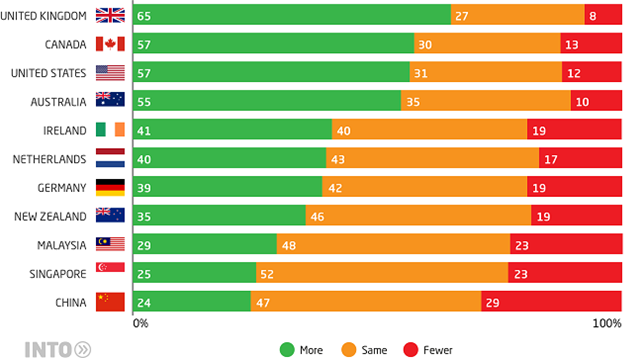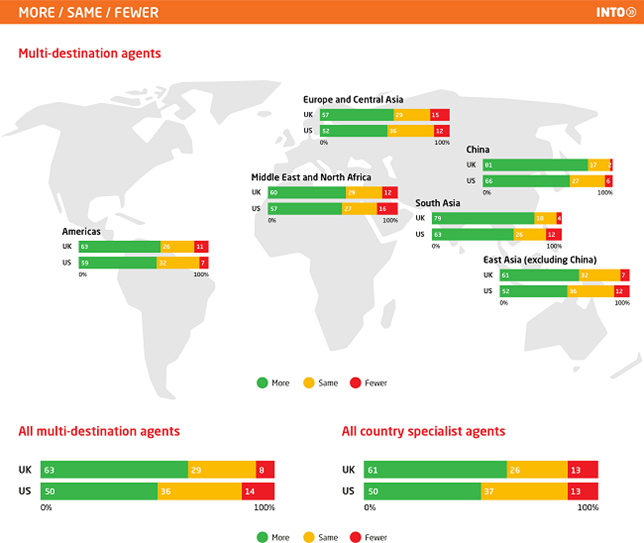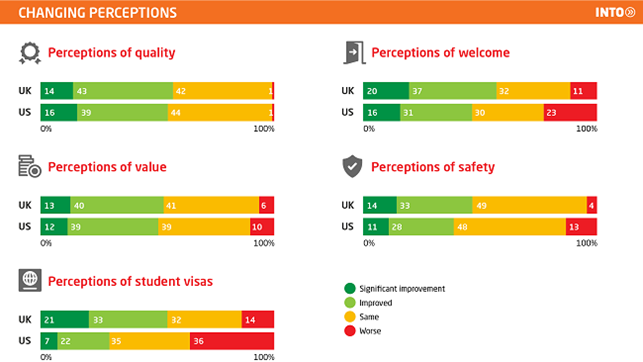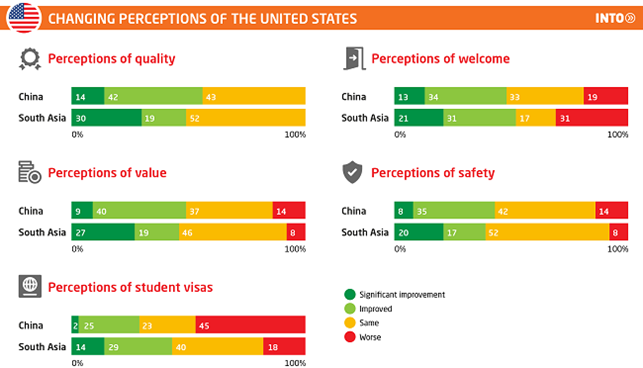Global agent poll: A crystal ball for international education?

Photo by Anika Huizinga on Unsplash
SEVIS, IIE, HESA, the OECD and Open Doors are useful tools for helping us understand the global distribution of students – and for establishing long term trends. But they are not crystal balls. INTO’s latest recruitment agent survey which polled more than 1800 counsellors across the world produces revealing insights into their assessment for future student enrollments in key destination countries. The survey, conducted in April 2019, includes almost 500 responses from China, traditionally a blackspot for global polls of this nature – and making it the most authoritative China agent insight survey ever conducted.
In the first of two blogs, we examine how counselor sentiment is driving confidence in key destination locations around the world – and what factors are informing those decisions.
More, same fewer - market sentiment - a UK renaissance?
One of the key questions is whether certain destinations can expect more, same or fewer students. The global results are clear – the United Kingdom appears to be enjoying a renaissance in popularity – and tops the recommendation charts. It is also interesting to note that agent sentiment towards the United States is also more robust than perhaps many observers fear. The agents polled ranked it just above Australia in terms of their enthusiasm to send more with 89% saying they intend to send more or the same number to the United States in the coming 12 months. In fact, the US sits alongside Canada, which is often cited as a destination which students gravitate towards as the US deals with its own challenges. However, the survey does provide yet more evidence on how perceptions – especially for the United States can be damaged by unfortunate messaging and hostile media.
In the coming year, do you expect to send more, the same or fewer students to the following destinations?

But how do these sentiments play out across the world?
We broke out the findings by source region and focused on the two key destinations – the United Kingdom and the United States. Once again, sentiment appears to be relatively consistent across key regions – as our chart below illustrates. China and South Asia in particular are behind the surge in popularity for the UK. It appears that counsellors in China are driving a lot of positive sentiment for the UK (81% of the agents surveyed there said they intend to send more to the United Kingdom in the coming year) which we explore later in this piece.
One unexpected finding is that Canada, which is a popular destination choice across the world, has experienced a decrease in positive sentiment for China.

Perceptions matter: What affects market sentiment?
The survey asked about the extent to which perceptions have changed for better or worse across key countries over the past twelve months. Quality of education and value have remained relatively stable but as our chart below illustrates, the US still struggles with some negative perceptions – largely relating to visas, welcome and safety. For ease of visas, the sentiment is significantly different between the US and the UK – with 36% of agents polled indicating that visas are getting more difficult for the United States. It is also clear that negative media commentary and policy pronouncement by Twitter is contributing to the United States much more so than any concern about value or quality, the latter of which appears as strong as ever.
While this appears to be a global phenomenon, it is more widely felt in China as opposed to South Asia, which might surprise some. This in turn has generated widespread media coverage in the region – as this feature in the South China Morning Post illustrates.


We can’t always control messages or tweets or the way in which these can be portrayed in the media. What we do know is that – the United States is a welcoming destination, that it offers some of the world’s finest education and that the country not only welcomes students from around the world but depends on that talent pipeline to support the US economy to drive the high value, high growth sectors upon which millions of US jobs depend.
One very clear message from this year’s survey is it is incumbent on us to continue to address negative perceptions – which clearly damage confidence in what is otherwise the world’s most popular destination. As John Hudzik, a senior fellow at NAFSA commented at this week’s NAFSA conference in DC, “Silence is not golden. Silence hurts our students and our institutions. You’ve got to put your soul where your core values are.”